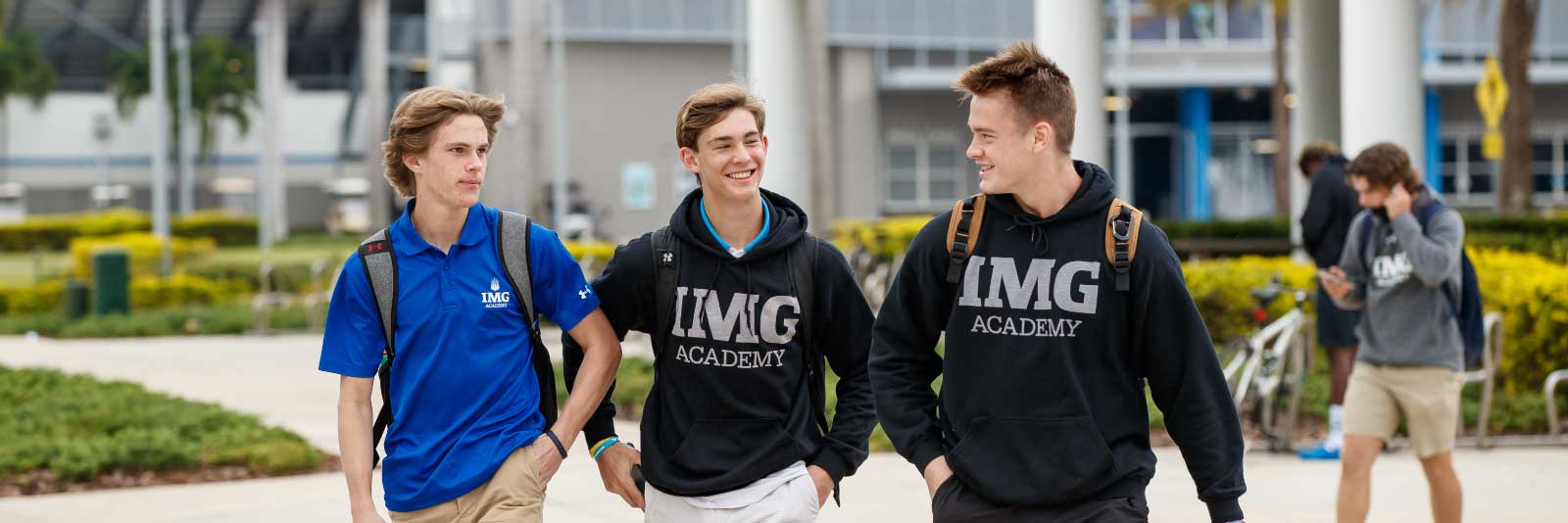NAIA Transfer Rules: What to Consider When Transferring to a Different College

Large numbers of college students are transferring schools each year. In fact, a report by the National Student Clearinghouse Research Center found that 51.2 percent of college students changed schools at least once. While the transfer process is tricky enough, it’s even more difficult for student-athletes.
Depending on where athletes are transferring to and from, the process can take months or even longer, and there are a lot of factors to consider. We’ve outlined the major steps athletes need to take based on where they are transferring to and from. However, especially at the NCAA Division 1 and Division 2 levels, there are many specific rules based on the athlete’s individual circumstances and background. Families must go through the school’s compliance office and athletic department to know what these specific rules are. The steps we include below are a great way to start the process and get the right people involved. If you have any questions about the transfer process, please reach out to our team of experts by emailing [email protected].
Quick Links
Transferring from an NAIA school to an NCAA school
Athletes transferring from an NAIA school to an NCAA Division 1 or Division 2 school will find that they have the strictest transfer rules. Because the transfer rules can be so complex, athletes need to work through their school’s compliance office to make sure they check off all the required boxes. We’ve included the basic series of steps athletes must follow to transfer, but there are certain nuances that will require consulting with the compliance officers at their new school.
Step 1: Athletes need to make sure that they qualify as a transfer student. According to the NCAA, athletes qualify as transfer students if they meet at least one of the following:
- Have been a full-time student (took at least 12 credit hours per semester) at a two- or four-year college during a regular term
- Have practiced with a college team
- Have practiced or competed with a college team while enrolled as a part-time student
- Have received athletic-related financial aid while attending summer school
- Division 1 only: The student received any type of financial aid from a college while attending summer school
Step 2: Athletes need to decide which division level they are going to transfer to and get their initial eligibility status. Their initial-eligibility status determines which transfer rules apply to the athlete, as well as how many seasons of competition the athlete qualifies for. The Division 1 and Division 2 academic criteria are the same as the academic eligibility requirements for incoming freshmen, which you can find in our NCAA Eligibility Center. Depending on how well the athlete meets the requirements for their desired division level, they will be given one of the following statuses:
- Qualifier: If the athlete would have been eligible to compete and receive a scholarship as an incoming freshman
- Nonqualifier: If the athlete would not have been eligible to compete, practice or receive a scholarship as an incoming freshman
- Academic redshirt: If the athlete was eligibility to practice and receive an athletic scholarship but they were not eligible to compete their freshman year; Division 1 only
- Partial-qualifier: If the student was able to practice and receive a scholarship, but they were not able to compete their freshman year; Division 2 only
- *Division 3 sets their own admission and eligibility standards. Typically, athletes transferring to a D3 school do not receive an initial status; instead, they must meet the admission requirements of the school they plan to attend.
Step 3: Athletes transferring to a D1 or D2 school must register with the NCAA Eligibility Center if they haven’t done so in the past. If an athlete hasn’t registered with the Eligibility Center in the past, they will automatically be given an initial-eligibility status of nonqualifier until they complete all the necessary steps to prove their NCAA academic eligibility. Athletes transferring to a D3 school do not need to register with the Eligibility Center, as D3 schools set their own academic requirements.
Step 4: The athlete must get a permission-to-contact letter from their athletic department or compliance office. The permission-to-contact letter is exactly what it sounds like: A letter from the athlete’s current athletic department or compliance office allowing the athlete to start the recruiting process with another coach. The Catch-22 here is that once an athlete requests their permission-to-contact letter, their current coach knows the athlete is on the market to transfer to a new school, but the athlete typically needs that letter in order to start talking to other coaches about transferring. This letter is different from the request to release form—athletes should be sure to clarify with their current program that they wish to remain on the team while they communicate with the new school.
- Athletes transferring to a D2 school don’t need a permission-to-contact letter—only athletes transferring to a D1 school need one. However, the coach at the D2 school is required to alert the athlete’s NAIA coach that the athlete is talking to them about transferring. Either way, the athlete will need to have a very difficult conversation with their current coach about their plans to transfer.
Step 5: The athlete should determine if they qualify for any exceptions. Generally speaking, most student-athletes are required to sit out one year at their new school (which equates to two semesters of 12 credit hours). This is called an academic year in residence, and it’s designed to allow students to become comfortable at their new school before they start competing in their sport. However, some athletes do qualify to skip the academic year in residence and start competing immediately based on their academics, sport desired conference, division level, National Letter of Intent status and more. Find out if your athlete qualifies for an exception by reviewing the NCAA’s Guide for Four-Year Transfers.
The rules for transferring to an NCAA school depend on many different factors: how long the athlete has been at the four-year college, what their grades were, how many credit hours they completed, what conference they are transferring to and much more. The athlete really needs to rely on their compliance office to double and triple check that they meet all the different transfer rules associated with competing at an NCAA school.
Families should also bear in mind that the NCAA eligibility requirements might be lower than the admissions requirements for that school. Transfer students typically must meet both the NCAA minimums and the school’s admissions minimums. Again, families should check with the school’s compliance office and admissions office to make sure that their athlete fulfills all the necessary criteria.
Transferring from a four-year school to an NAIA school
The NAIA transfer rules are basically the same for athletes coming from a four-year NCAA school or from a four-year NAIA school. The main difference to note is that NCAA student-athletes will need to register with the NAIA Eligibility Center, while current NAIA athletes should already have an NAIA Eligibility Center account.
The first step in transferring to an NAIA school is to determine if the athlete qualifies as a transfer student. The NAIA transfer rules state that student-athletes qualify as transfer students if they:
- Have taken time off between high school and coming to the NAIA
- Have attended a two- or four-year college as a student and/or a student-athlete
Athletes who do qualify as transfer students must comply with the following NAIA transfer rules: the residency rules, the 24/36 hour rule, the progress rules and the minimum 2.0 cumulative GPA.
Residency rules are for athletes who have participated in collegiate sports at a four-year school. These rules mandate that the athlete must wait 16 weeks before participating in that sport at an NAIA school unless the athlete:
- Has a written release from the athletic department at their most recent four-year college
- Has a minimum 2.0 GPA from all previous college coursework combined
- Meets all additional academic requirements and any conference-specific requirements for transfers
The 24/36 hour rule states that transfer students are required to have completed 24 semester hours (or 36 quarter hours) of college credit in their last two semesters (or three quarters) prior to transferring. In other words, athletes must complete at least 12 credits during each of their past two semesters at their previous four-year college (or the equivalent for schools on a quarters-based schedule) to be able to transfer to an NAIA school.
The progress rule refers to the fact that student-athletes are only able to compete in their sport for four total seasons. Transfer students who have already used one or more of their four seasons of competition in college sports need to show completion of the following before they can compete in their second, third or fourth season:
- Second season: 24 semester/36 quarter total cumulative credit hours
- Third season: 48 semester/72 quarter total cumulative credit hours
- Fourth season: 72 semester/108 quarter total cumulative credit hours (including 48 semester/72 quarter hours in general education or the student’s major field of study)
While the NAIA transfer rules are not as complex as transferring to an NCAA school, athletes still have many steps to go through before the transfer is complete. Regular communication with the compliance office and admissions office is the best way to keep everything on track and to make sure that the athlete didn’t miss a crucial step in the transfer process.
Transferring from a two-year junior college to an NAIA institution
Students transferring from a two-year junior college should follow the same NAIA transfer rules as athletes from a four-year institution. The main notable difference is in regard to the residency requirement. A student transferring from a two-year school has no residency requirement. However, if the athlete competed at a four-year college prior to attending the two-year school and didn’t competed at the two-year school, they must have a written release from the athletic department of the four-year institution.
NAIA transfer rules by conference
The NAIA rules set the national baseline for transferring; however, individual schools or conferences can have more stringent rules, depending on the policies of the conference the student is transferring into or the institution’s own transfer policies. It’s important to note that the compliance office should be up-to-date on all the NAIA transfer rules, including those by conference. As we mentioned earlier, families really should lean on the compliance office to help them understand and comply with all the different NAIA transfer rules.
What to consider before transferring colleges
Based on the NAIA transfer rules, it’s evident that transferring colleges isn’t an easy or straightforward process. It takes time, effort and a few uncomfortable conversations. This is why we always advise that athletes really consider their college choice before signing with a school. However, if an athlete really wants to transfer, here are a few things that they should consider:
- Transferring isn’t just about finding the right athletic fit—it’s also crucial that student-athletes really consider their academics. Does the new school offer their major? Will the student-athlete’s current credit hours count toward that degree at the new school? Is that major compatible with their athletic season at the new school?
- Social fit is also important to consider in the transfer process. Does the athlete want to attend a smaller school or a bigger school? Do they want to be in a city or a town? Families should consider all of these factors before taking the transfer plunge.
- The transfer process is going to take time to complete. Once an athlete has made the firm decision to transfer schools, they need to act immediately, starting with their school’s compliance office.
- In most cases, the athlete will need to get their current athletic department to allow them to start talking to other college coaches. This means that an athlete must have a tough conversation with their current coach, letting them know that they want to transfer schools.
- Some of the athlete’s class credits at their current school might not transfer over to the new school, or they might not be worth the same amount of credit hours. This means that the athlete could potentially have to add more coursework to their schedule in order to stay on track for graduation.
















